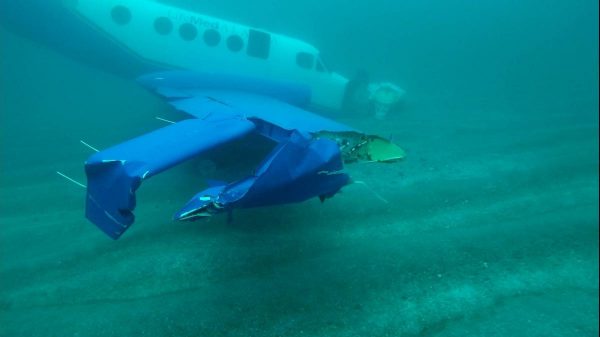
The National Transportation Safety Board has released its preliminary report on a medevac airplane that crashed into the waters of Unalaska Bay last month.
While the early findings establish some of the facts surrounding the Jan. 16 crash, the chief of the NTSB’s Alaska Regional Office said it’s too soon to pinpoint the cause.
Related: Three rescued by boat after LifeMed plane crashes in Unalaska
“We’re still very much in the formative stages of the investigation,” said Clint Johnson. “However, (the report) does outline the circumstances and the weather conditions and the sequence of events that led up to the accident.”
The LifeMed King Air Beechcraft plane went down about 100 feet northwest of the airport runway while trying to take off around 8 a.m. All three people onboard — a pilot, a paramedic and a nurse — evacuated to a life raft and were rescued with no serious injuries.
Though the NTSB has yet to conduct a full interview with the pilot, Johnson said, he initially told investigators the “airspeed rapidly dropped” during the downwind takeoff from the airport’s “runway 31” orientation, which faces Hog Island. That direction is required for departures before daybreak.
The report also said the plane’s stall warning horn sounded before it crashed into the water. The wind was coming from the east-southeast at 16 knots, with gusts up to 22 knots, giving the plane a strong tailwind.
Johnson said the NTSB will likely take a year to complete its investigation and release a final report.
“We don’t speculate,” he said. “We’re very factual in our investigations, and that’s exactly what we are going to do here. We have a ways to go on this and still a lot of work to do. We’re not drawing any conclusions at this point.”
The medevac accident is one of two Unalaska plane crashes currently under investigation by the NTSB.
The agency is also studying RavnAir Group’s PenAir plane crash in October, which killed one passenger and injured about a dozen others. While the NTSB’s preliminary report on that crash identified pilot inexperience and shifting winds as factors, the full investigation is expected to take a year.




